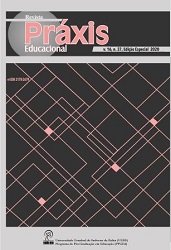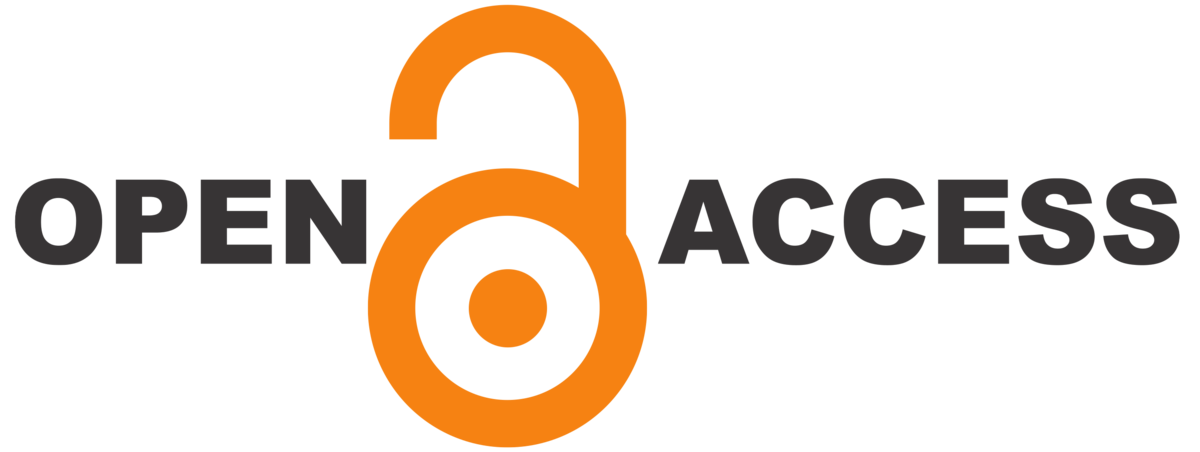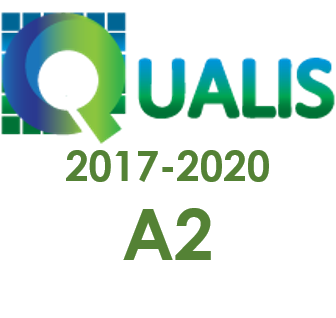MUSIC COMPUTER TECHNOLOGIES AS AN INTEGRATIVE NETWORKING EDUCATIONAL ENVIRONMENT
DOI:
https://doi.org/10.22481/praxisedu.v16i37.6433Palavras-chave:
comunicação interativa, tecnologias da informação (TI), métodos de ensino, tecnologias da música para computadores (MCT), ambiente educacional, ensino da música, tecnologia na educaçãoResumo
O estudo se torna relevante pela busca das abordagens mais apropriadas para o desenvolvimento pedagógico dos novos recursos da tecnologia da informação, aplicáveis ao ensino interativo de música - por exemplo, ensinar a tocar um instrumento musical com o uso de um programa de computador. O objetivo do estudo é considerar a interatividade, a interação em rede e a implementação de funções educacionais como principais recursos das tecnologias de computador da música (MCT). Essas tecnologias podem ajudar a desenvolver uma metodologia eficaz para treinamento apropriado e novos sistemas de software e hardware com os quais os alunos podem aprender três dos componentes mais importantes da habilidade musical: o teclado de um instrumento específico, notação musical e teoria musical. Os autores concluem que o MCT pode e deve atuar como um ambiente educacional de rede interativa, e é necessário preparar uma lista de repertórios para o processo educacional nessas condições, bem como buscar formas organizacionais legais dessa atividade.
Downloads
Referências
Experiencing music technology: software, data, and hardware. Edit. D. Williams, P. Webster. 2nd ed. NY: Schirmer Books, 1999. 693 p.
Crawford R. (2007) Authentic Learning and Digital Technology in the Music Classroom. Victoria: Monash University [Unpublished PhD dissertation] https://trove.nla.gov.au/work/35149324?q&versionId=43654170.
Webster P. Computer-based technology and music teaching and learning. The new handbook of research on music teaching and learning. R. Colwell & C. Richardson (Eds.), NY: Oxford University Press, 2002. pp. 416-439. https://ru.scribd.com/document/382434165/The-New-Handbook-of-Research-on-Music-Teaching-and-Learning-a-Project-of-the-Music-Educators-National-Conference.
Gorbunova I. B., Chibirev S. V. (2019) Modeling the process of musical creativity. Opción, Año 35, Especial No. 22, pp. 392-409.
Gorbunova I. B., Zalivadny M. S. (2018) The Integrative Model for the Semantic Space of Music: Perspectives of Unifying Musicology and Musical Education // Problems of Music Science / Music Scholarship. № 4 (33). pp. 55-64. DOI: 10.17674/1997-0854.2018.4.055-064
Alieva I.G., Gorbunova I.B., Mezentseva S.V. Music Computer Technologies as Means of Broadcasting and Preserving Musical Folklore (as exemplified by the Russian Far East) // Issues of the Musical Science/ Music Scholarship. 2019. 1 (34). Pp. 140-149. DOI: 10.17674/1997-0854.2019.1.140-149
Jacko V. A., Choi J. Ho, Carballo A., Charlson Br., Moore J. E (2015) A New Synthesis of Sound and Tactile Music Code Instruction in a Pilot Online Braille Music Curriculum. Journal of Visual Impairment & Blindness, pp. 153-157. DOI:10.1177/0145482x1510900212.
Gorbunova I. B., Govorova A. A. (2018) Music Computer Technologies in Informatics and Music Studies at Schools for Children with Deep Visual Impairments: from the Experience. In: Pozdniakov S., Dagienė V. (eds) Informatics in Schools. Fundamentals of Computer Science and Software Engineering. ISSEP 2018. Lecture Notes in Computer Science, vol. 11169. Springer, Cham DOI: https://doi.org/10.1007/978-3-030-02750-629.
Gorbunova I.B. Music Computer Technologies in the Perspective of Digital Humanities, Arts, and Researches. Opcion. 2019. Т. 35. № S24, pp. 360-375.
Odinets V.P. Sketches on the History of Computer Science: a Study Guide in 3 vol. Vol. 3 // Syktyvkar: Komi Pedagogical Institute, 2013. Pp. 148.
Stensæth K. (2018) Music therapy and interactive musical media in the future: Reflections on the subject-object interaction. Nordic Journal of Music Therapy, Vol. 27 No. 4, pp. 312-327, DOI: 10.1080/08098131.2018.1439085.
Rating of Smartphone Manufacturers in 2019. [E-source] // https://www.itrew.ru.
Music Vision International LLC [E-source] // http://www.softmozart.com.
Petrovic-Dzerdz M., Trépanier A. (2018). Online Hunting, Gathering and Sharing – A Return to Experiential Learning in a Digital Age. The International Review of Research in Open and Distributed Learning, 19 (2). https://doi.org/10.19173/irrodl.v19i2.3732.
Calderón-Garrido D., Cisneros P., García I. D., Fernández D., de las Heras-Fernández R. (2019). La tecnología digital en la Educación Musical: una revisión de la literatura científica. Revista Electró-nica Complutense de Investigación en Educación Musical, No. 16, pp. 43-55. DOI: https://doi.org/10.5209/reciem.60768.
A. Karabanova et al. Age-Psychological and Psychological-Pedagogical Approaches to Ensuring Children’s Information Security // [E-source] // Federal Service for Supervision of Communications, Information Technology and Mass Media’s website // Available at: http://rkn.gov.ru/mass-communications/p700/p701/?print=1 / Section 9 (Access date: 12.12.2019).
Bauer W. I., Music Learning Today: Digital Pedagogy for Creating, Performing, and Responding to Music. Published to Oxford Scholarship Online: 2014. DOI:10,1093/acprof:осо/9780199890590.001.0001.
Liu M., Su S., Liu S., Harron J., Fickert C., Sherman B. (2016). Exploring 3D immersive and interactive technology for designing educational learning experiences. In Neto, de Souza R., Gomes A. S. (Eds.), Handbook of research on 3-D virtual environments and hypermedia for ubiquitous learning. Hershey, PA: IGI Global. (pp. 243–259). DOI: 10.4018 / 978-1-5225-5469-1.ch051.
Losada M., Heaphy E. (2004) The role of positivity and connectivity in the performance of business teams. American behavioral scientist, Vol. 47, No. 6, pp. 740-765.
Hernandez-Ruiz E. (2019) How is music processed? Tentative answers from cognitive neuroscience. Nordic Journal of Music Therapy, Vol. 28, No. 4, pp. 315-332, DOI: 10.1080/08098131.2019.1587785.
Schüler A. (2019) The Integration of Information in a Digital, Multi-modal Learning Environment. Learning and Instruction, Vol. 59, pp. 76-87. https://doi.org/10.1016/j.learninstruc.2017.12.005.
Gorbunova I. B., Hiner H. (2018) Music Computer Technologies and Interactive Systems of Education in Digital Age School. Proceedings of the International Conference Communicative Strategies of Information Society (CSIS 2018). Advances in Social Science, Education and Humanities Research. https://doi.org/10.2991/csis-18.2019.25.
Cremata R., Powell B. (2016) Digitally mediated keyboard learning: Speed of mastery, level of retention and student perspectives. Journal of Music, Technology & Education, Vol. 9, No. 2, pp. 145-159 (15). DOI: https://doi.org/10.1386/jmte.9.2.145_1
Plotnikov K. J. The Significance of the Artistic Repertoire for Teaching Music in a General Education School and for the Educational Process in General // Scientific research in the field of culture and education: issues and prospects. 1 // Collection of scientific articles based on the materials of the I International Conference of Young Scientists “Relevant Problems of Modern Culture and Education,” March 29-31, 2016 // Under the scientific editorship of Olesina E.P. and Przhlenskaya I.B. Moscow: Institute of Art Education and Cultural Studies of the Russian Academy of Education. 2016. Pp. 73-79.
Gorbunova I.B., Plotnikov K.Yu. Music-Related Educational Project for Contemporary General Music Education of Schoolchildren. International Journal of Innovation, Creativity and Change. Vol. 9, Issue 13, 2019, pp. 683-699.
Materials about Soft Way to Mozart system from the XIII International Academic/Practical Conference. https://www.musiceducation2.org/pages/soft-way-to-mozart-science-old, https://www.softmozart.com
Al-Shaher M.A. Assessment of M-Service Acceptance in Educational Context. Journal of Southwest Jiaotong University. Vol. 54, Issue 5, 2019, http://jsju.org/index.php/journal/article/view/369
Alasmri M., Onn W.C., Hin H.S. Social Networking Framework for Learning Motivation. Journal of Southwest Jiaotong University. Vol. 54, Issue 6, 2019, http://jsju.org/index.php/journal/article/view/450
Downloads
Publicado
Como Citar
Edição
Seção
Licença
Você é livre para:
Compartilhar - copia e redistribui o material em qualquer meio ou formato; Adapte - remixe, transforme e construa a partir do material para qualquer propósito, mesmo comercialmente. Esta licença é aceitável para Obras Culturais Livres. O licenciante não pode revogar essas liberdades, desde que você siga os termos da licença.
Sob os seguintes termos:
Atribuição - você deve dar o crédito apropriado, fornecer um link para a licença e indicar se alguma alteração foi feita. Você pode fazer isso de qualquer maneira razoável, mas não de uma forma que sugira que você ou seu uso seja aprovado pelo licenciante.
Não há restrições adicionais - Você não pode aplicar termos legais ou medidas tecnológicas que restrinjam legalmente outros para fazer qualquer uso permitido pela licença.












